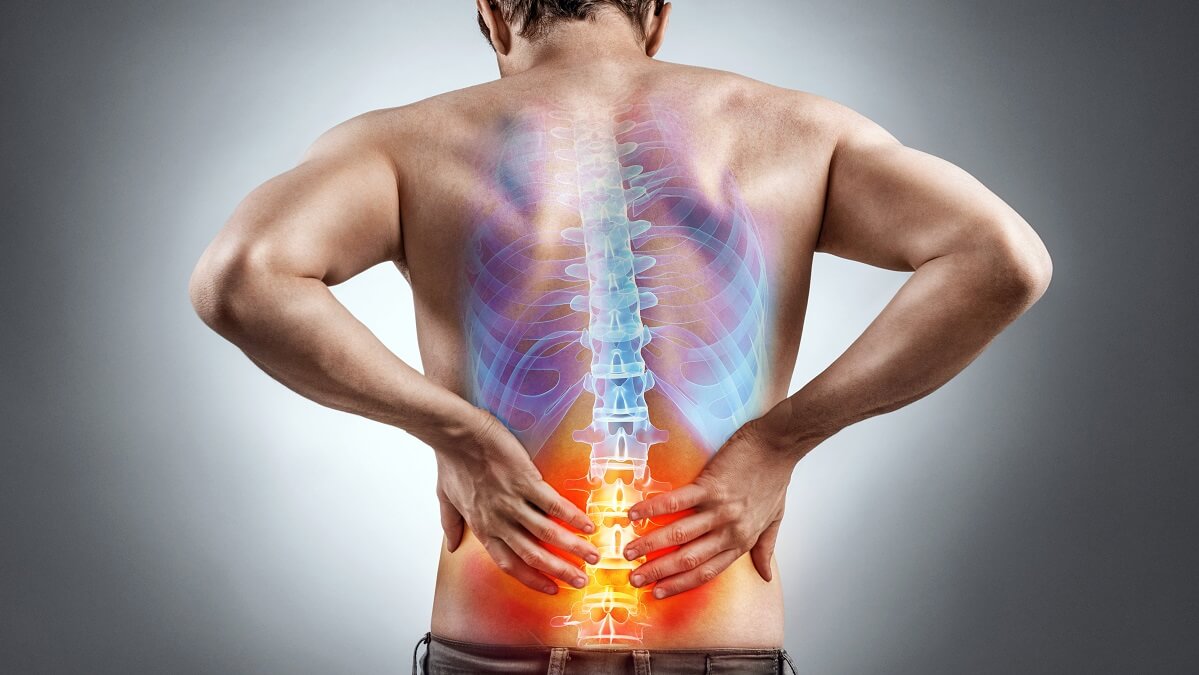Back pain is a very common problem, with one in six Australians reporting having back problems.
If you have sciatica, or irritation of the sciatic nerve, the pain can travel down one or both legs. The nerve starts from the lower spine on both sides and travels down through the pelvis and buttocks. It goes along the back of each upper leg and then splits into smaller parts at the knee, then reach down to the feet.
When something presses on or annoys this nerve, it can cause pain that shoots down the back of one buttock or thigh. The pain can feel different for different people – ranging from a mild ache to a sharp burning feeling, or really strong discomfort. Sciatica can also make your leg or legs feel numb, weak or tingly.
Pain may be made worse by prolonged sitting, standing up, coughing, sneezing, twisting, lifting or straining.
Medications for sciatica pain
Several types of medications may be used for sciatica pain. Oral medications include:
- over-the-counter pain relievers such as acetaminophen, aspirin or NSAIDs
- prescription muscle relaxants to ease muscle spasms
- antidepressants for chronic low back pain
- prescription pain medications for more severe pain.
While many people with sciatica recover within a few weeks, those who continue to feel pain and symptoms for longer may undergo a steroid injection. Steroids reduce inflammation and may help ease sciatic pain.
In these cases, a steroid medication is injected into the space around the spinal nerve. Research suggests these injections have a modest effect when irritation is caused by pressure from a herniated or ruptured disc.
Physical therapy for sciatica relief
When sciatica pain strikes, lying in bed might seem like the most comfortable option. But doctors don’t recommend it as the main solution. Instead, consider staying active.
If your pain or discomfort is not severe but lasts for longer than two weeks, your doctor might recommend physical therapy. This involves doing specific exercises that can help ease sciatica pain and make it less likely to return.
The exercises you’ll do depend on what’s causing your sciatica, so it’s important to work with a physical therapist who has experience working in this area. It’s important to do the exercises exactly as directed, many physiotherapists offer videos that you can follow when doing the exercises at home.
Alternative remedies for sciatica
For some individuals, relief from sciatica pain comes through complementary and alternative therapies such as biofeedback and acupuncture. However, it’s important to note that scientific research hasn’t definitively proven their effectiveness in treating sciatica.
Biofeedback is a method aimed at gaining awareness and control over bodily functions such as heart rate, blood pressure and muscle tension. It involves using a special machine that provides real-time data about these functions. Armed with this information, individuals can often learn how to consciously manage and improve them.
Biofeedback is often used as a therapeutic tool to help people manage stress, anxiety, pain and various health conditions. It can empower people to develop self-regulation skills and improve their overall wellbeing.
Acupuncture is a treatment that involves delicate needles being precisely inserted into specific locations on the skin known as acupuncture points.
Surgery for sciatica
A very small percentage of those who suffer from sciatica will require surgery. Typically, if sciatica-related pain persists despite treatment for at least six weeks, you might be directed to see a specialist, and surgery could become an option.
The primary aim of surgery is to address the root cause of the sciatica. For instance, if a herniated disc is pressing on the nerve, surgery might be recommended to rectify the issue.
However, it’s essential to note that surgery is usually only considered when sciatica symptoms are particularly severe or if they are worsening progressively.
Home treatments
For most people, sciatica responds to self-care measures. Although resting for a day or so may provide relief, staying inactive will make symptoms worse.
Other self-care treatments that might help include:
- Cold treatment: place a cold pack on the painful area for up to 20 minutes several times a day. Use an ice pack or a package of frozen peas wrapped in a clean towel.
- Heat treatment: use hot packs, a heat lamp or a heating pad on the lowest setting to apply heat to the areas that hurt. For continuing pain, try alternating between heat and cold.
- Stretching: gently stretching the low back might provide some relief. Avoid jerking, bouncing or twisting during the stretch and don’t overdo it.
If your pain is severe or ongoing, book an appointment with your doctor. Some questions they are likely to ask include:
- Do you have numbness or weakness in your legs?
- Do certain body positions or activities make your pain better or worse?
- How much does your pain limit your activities?
- Do you do heavy physical work?
- Do you exercise regularly? If yes, with what types of activities?
- What treatments or self-care measures have you tried? Has anything helped?
Have you ever had sciatica? How did you find relief? Let us know in the comments section below.
Also read: Simple ways to avoid back pain
Disclaimer: This article contains general information about health issues and is not advice. For health advice, consult your medical practitioner.


I found relief after weeks of pain by doing exercises from a physiotherapist my pain stopped but I still have calf pain tender muscles.
I found that medication was the only thing that helped me